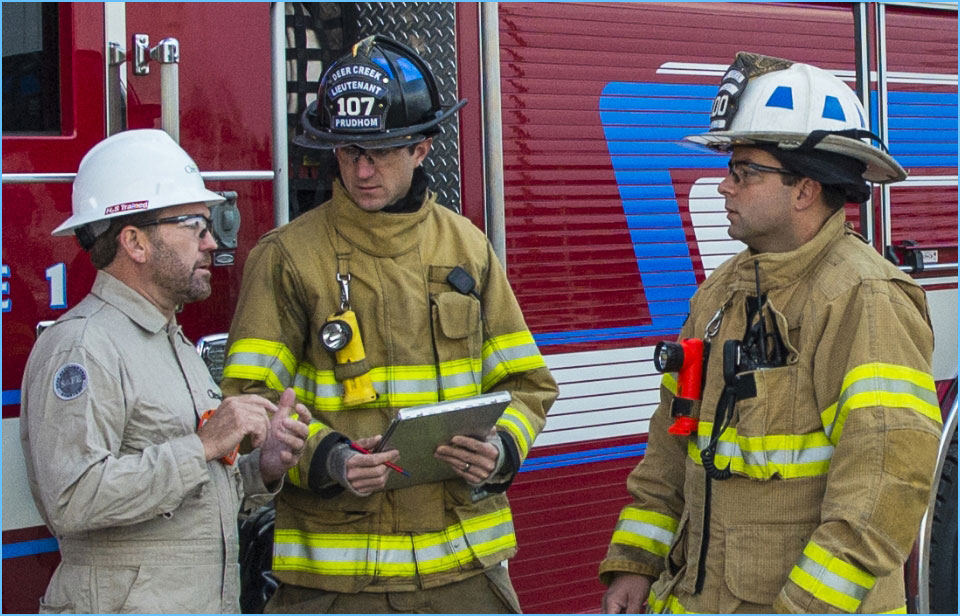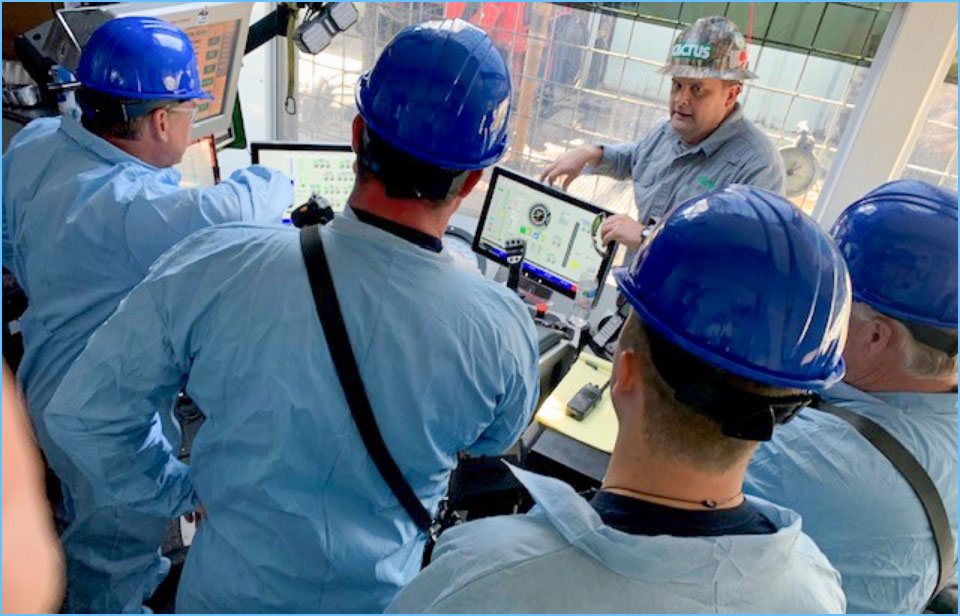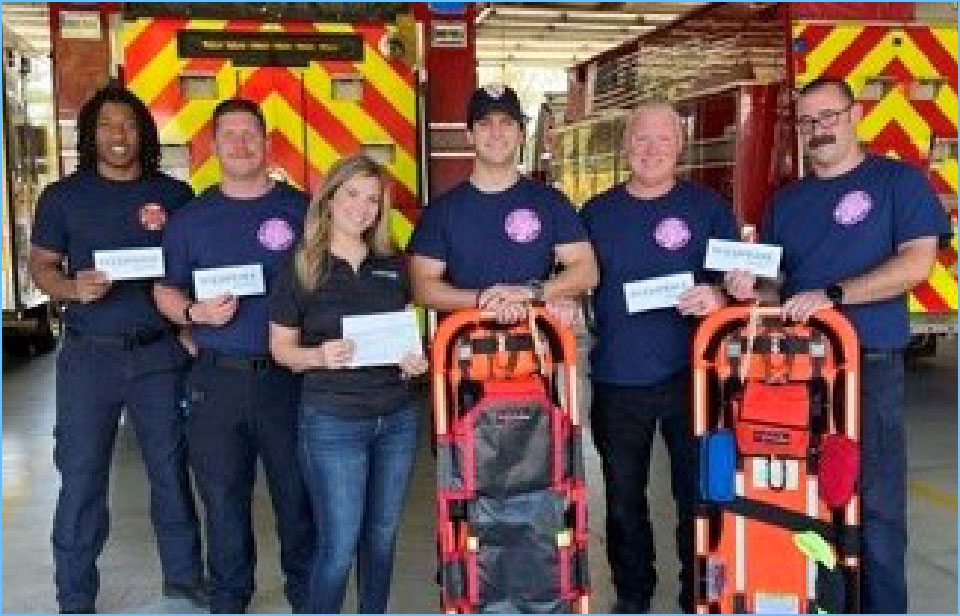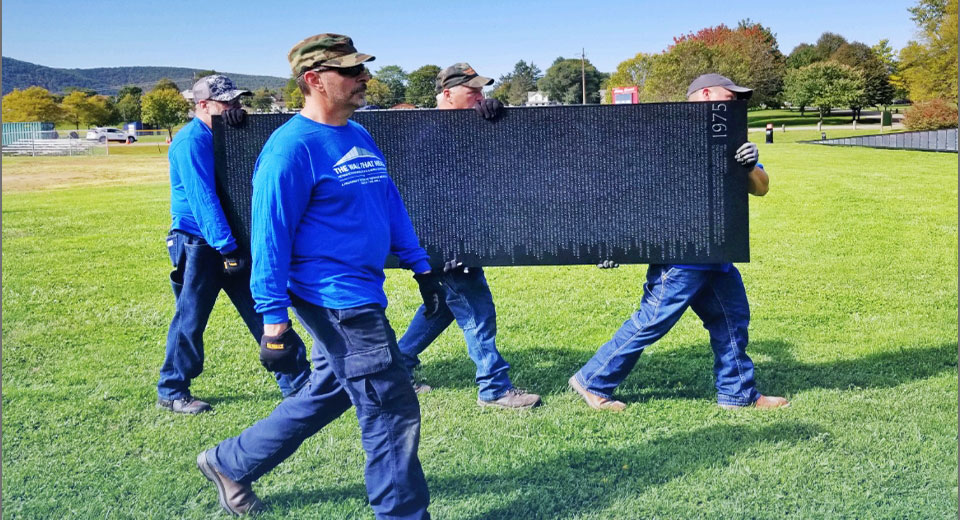Understanding and Managing Our Risks
Through our Enterprise Risk Management (ERM) program, Chesapeake takes a comprehensive approach to identifying, assessing and managing sustainability-related risks.
Risk Management Process
1
Identification
2
Assessment
3
Evaluation
4
Mitigation or Treatment
5
Monitor and Report
We use the Three Lines of Defense as our framework for risk management, helping to ensure all employees play a role in risk identification and mitigation.
1st Line of Defense
Owns and Manages Risk
(Operational and Service Groups)
Encourages identification and control of risks at the front lines
Internal risk owners (senior managers and subject matter experts) regularly review and assess company risks
An annual risk survey asks employees throughout the organization to review existing risk drivers and identify emerging risks
2nd Line of Defense
Oversees Risks, Controls and Compliance
(Internal Controls)
Provides impartial enterprise risk and compliance analyses
3rd Line of Defense
Provides Independent Assurance
(Internal Audit)
Uses a standardized, objective process to identify risk-based audits of department and business unit controls and processes
Reports directly to the Board Audit Committee
If it’s determined that a risk requires mitigation, management develops and executes specific plans to reduce the risk to an acceptable level. Mitigation options include:
- Adopting or enhancing corporate policies
- Implementing new or enhancing existing procedures
- Developing contingency plans
- Adopting technology solutions
Our business continuity and disaster recovery programs are examples of Chesapeake’s enterprise-level, risk-mitigation controls. Through these programs, a cross-functional task force assesses the business impacts of certain risks and develops response and recovery plans to reduce potential interruption.
Protecting employees and maintaining operations during sustained incidents (such as natural disasters, pandemics and other disruptive events) is the primary goal of our business continuity program.
Ready and Responsive in Emergencies
Should a risk escalate into an emergency, our Emergency Response Plan (ERP) provides employees with the framework and action steps critical for responding to an incident in a safe, rapid and efficient manner. Our priorities are protecting people and the environment, minimizing impact and limiting operational losses, in tandem with regulatory compliance.
Our ERP is built on:
- Well-trained personnel responding in a tiered approach based on incident level
- An assessment of potential scenarios followed by drills to help ensure response readiness
- Engaged partnerships with local responders and professional emergency response contractors
- Scalable, flexible and adaptable operational capabilities
- A unified Incident Command
As part of our robust ERP, Chesapeake utilizes the National Incident Management System (NIMS), a nationwide incident response template, to work cooperatively with local, state and federal agencies in the event of an emergency, regardless of location. NIMS also allows for the integration of facilities, equipment, personnel and communications to create common processes for planning and managing resources, all of which expedites the emergency response.
Supporting First Responders
We recognize that a strong ERP is further strengthened with a prepared local first responder team. For this reason, and to show our appreciation to the men and women who serve our local communities, we offer a number of partnership opportunities.

Through our First Responder Outreach program, members of our Emergency Preparedness and Response group and Operations teams interact regularly with local responders to understand department capabilities and establish partnerships.

We also offer information sessions covering drilling, completions and production site equipment, potential hazards and key industry terminology to provide valuable safety awareness for fire responders.

Many of our operational sites are served by rural, often volunteer, fire departments. Given their limited resources, we donate financially to meet local department needs and enhance community safety.


